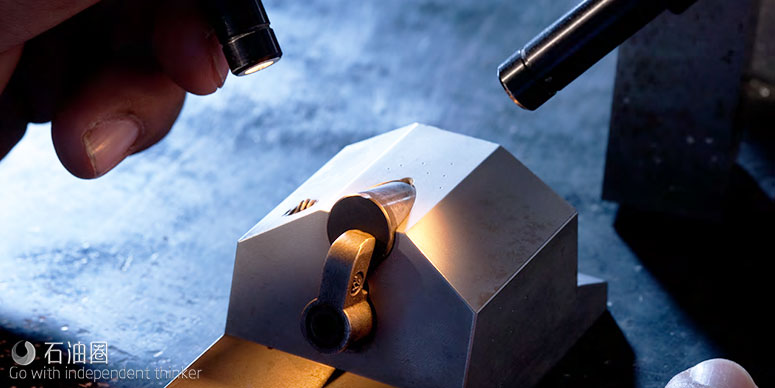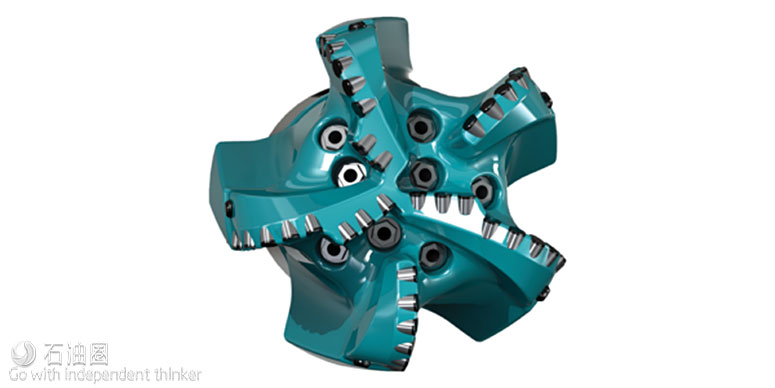Although a drill bit is but one component of a large and complex drilling system, it can have an outsized impact on the efficiency of a drilling operation. “While the amount of money spent on drill bits may be less than 1% of the total cost of the well, it can really be argued that no single component contributes more to the overall drilling performance,” said Wiley Long, Bits and Drilling Tools Product Champion at Smith Bits, a Schlumberger company.
Because of the significant role that bits play in drilling performance, operators are constantly on the hunt for new bits that can drill longer and further and provide a higher rate of penetration (ROP). They’re also looking for bits that provide better toolface control, which minimizes the readjustments that directional drillers have to make to the bit orientation so they can simply drill ahead.
In response to these needs from operators, service and tool companies have used advanced modeling and finite element analyses to understand the major barriers to ROP and durability, including poor cuttings evacuation, high thermal generation and vibrations. Based on these understandings, they’ve developed new cutter geometries and layouts and improved the hydraulics of the bit.
Whenever possible, operators want to drill an entire section with just one drill bit, said John Campbell, Global Business Development Manager at Halliburton. “Operators want to see bits that can effectively drill straight ahead in the vertical sections and can deliver high doglegs and good directional control with high ROP in the laterals,” he said. “Naturally, they also want to achieve this with one bit run, shoe to shoe, as often as possible.”
For a bit to drill for so long, especially in laterals that exceed 10,000 ft, it must be rugged and durable. Further, as contractors build rigs with higher-powered pumps and directional companies roll out high-powered motors, a lot more energy is being delivered to the bit, Mr Campbell noted. “We’re seeing that we need more material strength and more durable bits just to handle the power that’s getting to these bits.”
In the past, increasing ROP often would decrease durability. But in today’s drill bits, higher bit durability and ROP can go hand-in-hand, Mr Campbell said. “Historically, with drill bits, you had to balance these competing objectives,” he said. “When we tried to increase the durability of the bit, often through increased diamond volume, that would hurt the ROP.” Now, advances with cutter layout in drill bits have helped eliminate this either/or proposition, he added. Cutters are remaining sharper for longer, helping operators to maintain ROPs throughout the section being drilled.
Rethinking hydraulics
The faster a bit drills, the more cuttings it produces in a given period of time. If those cuttings build up, it can reduce ROP and sap drilling energy. Additionally, cuttings buildup can insulate and create friction at the bit, resulting in higher temperatures around the bits and cutters. It’s not uncommon for stagnant cuttings to cause a rise in temperatures at the bit, which can cause degradation of the diamond and damage the cutter, said Chris Casad, Innovation Project Manager for Ulterra. “Having lower temperatures reduces damage, which means you have sharper cutters for longer, and that keeps you drilling at a high level for the entire duration of your well.”
After multiple years of development and testing, Ulterra will release SplitBlade, a PDC bit with optimized nozzle placement and fluid channeling, in late March. The placement of the nozzles and channels, which was determined through the use of computational fluid dynamics (CFD), improves the evacuation of the cuttings.
Additionally, the cutters on the bit’s inner blades are advanced forward, engaging the formation earlier and enabling better toolface control, Mr Casad said. This improves the blades’ grip on the formation, enabling better directional control.
Bits designed with SplitBlade technology have two dedicated channels of evacuation for each primary blade, as well as nozzles at the cone and shoulder of the bit. This allows SplitBlade to “separate the cutting evacuation from the cone of the bit and from the shoulder of the bit,” which are the two areas most prone to cuttings accumulation, Mr Casad said. Keeping the cone clean enables better directional control and steering, and keeping the shoulder clean allows the bit to drill faster.
Typically, when cuttings are evacuated from the bit, cuttings from the cone pass by the shoulder and can build up in that spot. With this new bit technology, the dedicated nozzles and channels at the cone and shoulder give the cuttings a more direct path away from the bit. “In addition, the shoulder isn’t burdened by all those cone cuttings anymore and is freed up from having to deal with that volume of rock. It can put its energy into drilling faster,” Mr Casad elaborated.
The placement of the channels and nozzles, along with nozzle orientation, was determined through CFD and was conceptualized with hydraulic optimization in mind, Mr Casad said.
Ulterra performed computer simulations with different jet and nozzle sizes, nozzle placements and nozzle orientations to determine the optimum flow path for cuttings evacuation and the best design to achieve that flow path. “We used the CFD simulations to dial in and hone the right place to put those nozzles, the right way to orientate the nozzles to work together with the cutting structure and with the blade structure.”
The use of the CFD simulations also led to the recognition that the nozzles on a bit’s primary blades are often oriented in such a way that the flow paths from each nozzle get in the way of one another. “The outer nozzle actually works to seal off the inner nozzle’s flow and to prevent it from exiting the bit,” Mr Casad said. Ulterra then ran additional CFD simulations to determine the nozzle offset and orientation that would create separate and uninterrupted flow paths for each nozzle.
SplitBlade bits have drilled nearly 3 million ft to date and have been used on more than 300 rigs, according to Ulterra. It was first deployed in a field test in Lavaca County, Texas, in the Eagle Ford, last summer. Operators using the bit have seen an average 30% ROP gain compared with offset data, Mr Casad said. In one Lavaca County well, the bit drilled the curve and lateral sections – totaling more than 11,000 ft – in 68 hours, for an ROP of 172 ft/hr. The dull condition of the bit after the run was 1-1-TD, showing low wear on the cutters due to better hydraulics, thermal management and cuttings evacuation.
Since its initial deployment in Lavaca County, Ulterra has run the bit for operators in field tests all over the Eagle Ford. It’s also been used in East and West Texas.

 石油圈
石油圈

